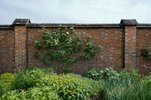- Joined
- 2 February 2006
- Posts
- 14,009
- Reactions
- 2,894
Countries in Europe have so many immigrants piling in, particularly the UK, that their countries could be full of Prefab homes. They could line them up along the beeches so that immigrants could walk into them. If landlocked they could be put on the outer perimeters.Makes perfect sense.






